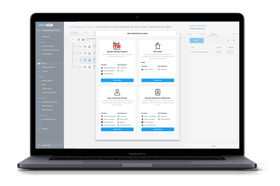
As of June 2025, new Anti-Money Laundering regulations will require all Reporting Entities to adopt a Customer Risk-Rating process, marking a shift towards a more...
“Money laundering” – it calls to mind laundromats and giant bags of cash, or maybe the Netflix series Ozark. For most people it’s a vague concept that’s ‘bad’, with no understanding of what it is and how it actually happens. But it’s a big problem: in New Zealand alone, around $1 billion is laundered every year, while globally the figure is estimated to be $4 trillion.
Laundered money is a result of the most appalling crimes, such as drug smuggling, human trafficking, bribery, blackmail…. etc., and New Zealand is united with countries around the world to detect and deter money laundering.
In this article I’ll give you the run-down on what money laundering is, how it happens, and what New Zealand is doing to combat it with anti-money laundering laws.
Money laundering is the way in which criminals take “dirty” money obtained through illegal activities, and “clean” it by running it through several different transactions to obscure its origins.
As mentioned above, this money is usually a result of some seriously illegal activity, so criminals have a lot of motivation to hide its origins so they can spend it without being caught.
There are many sophisticated ways to layer the funds through multiple channels. For example, putting $1 million cash into your bank account is easily detected. Using different financial products and assets can disguise the origin of the money.
*please note, this is not a how-to guide...
There are a variety of ways money can be laundered, ranging from the simple (such as business fronts) to the very complex (multi-country money transfers via shell corporations). The methods of money laundering are seemingly limited only by criminal imagination.
There are three typical stages to the money laundering process: placement, layering, and integration.
Money launderers don’t work in isolation. They frequently make use of professional service providers to move money around, such as lawyers, accountants, real estate agents, and fund managers.
The reason professional services are targeted is because they have the authority to handle large sums of money without suspicion, or they can set up the systems by which money can be transferred or obscured. They also own qualifications that add a veneer of legitimacy and are members of a body that is trusted by society. Perfect for money launderers.
All of the above spells out how big a problem money laundering is for New Zealand and the world, but we’re not sitting idly by and just letting it happen.
In 2009, New Zealand passed the Anti-Money Laundering/Countering the Financing of Terrorism (AML/CFT) Act, which is a set of obligations for businesses captured under the Act to help detect and deter money laundering happening as part of their every-day service offerings. Such businesses range from casinos to banks, law firms to real estate agents, and more. The enforcement of the Act is overseen by three Supervisors: the Department of Internal Affairs, Reserve Bank of NZ, and Financial Markets Authority.
Like our Health and Safety laws, the AML/CFT Act is risk-based legislation. This means the company must identify and then mitigate their risks. Your company is captured under the Act by the products and services you provide. For example, if you offer a captured service you must comply with the rules and obligations set out in the Act.[1]
If you’re captured under the Act, you have certain AML obligations you must undertake to protect your business (and reputation!) from money laundering:
You must also:
It’s important to note that under the Act, businesses cannot outsource their liability.[2] For example, if they use a third-party to manage CDD, the business still must review the outsourced work and sign it off.
The AML/CFT Act comes with both criminal and civil penalties which is meant to enforce the legislation, and businesses need to be rigorous in complying with its obligations. Businesses and individuals that do not meet their AML obligations could be faced with the following:
Businesses and professionals are key to disrupting money laundering activities, as they are a major channel through which money is legitimized and returned to criminals. With over $1 billion being laundered in New Zealand every year, businesses and professionals have a responsibility to get to grips with money laundering: what it is, how it happens, and what their obligations are under the Act. By understanding and meeting their AML requirements, businesses and professionals can help fight the profiteering of human trafficking, drug smuggling, corruption and bribery.

AMLHUB is New Zealand’s leading Anti-Money Laundering Software, helping you manage all your AML/CFT obligations from one digital platform. We support and empower your business to own and manage its AML obligations, so you can meet all the requirements of the Act in the easiest way and with total transparency.
Find out more about how AMLHUB can help your business.
[1] https://www.dia.govt.nz/AML-CFT-information-for-accountants
[2] https://www.dia.govt.nz/aml-cft-outsourcing-customer-due-diligence
[3] https://www.legislation.govt.nz/act/public/2009/0035/latest/DLM2140968.html
[4] https://www.legislation.govt.nz/act/public/2009/0035/latest/DLM2140981.html

As of June 2025, new Anti-Money Laundering regulations will require all Reporting Entities to adopt a Customer Risk-Rating process, marking a shift towards a more...

If the time for your AML audit is rapidly approaching, the most important question at the forefront of your mind should be: who will be my AML auditor?